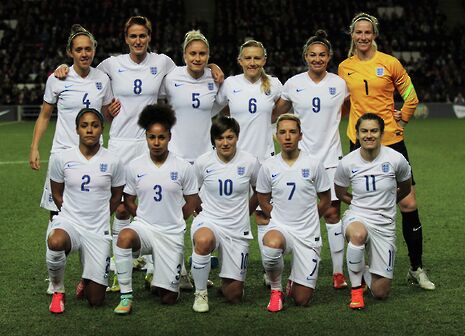Whatever happened to the Women’s World Cup hype?
The gender imbalance in sports media is being caused by a vicious circle of a lack of coverage and a lack of interest reinforcing each other

This summer it was all looking very promising: there was a media storm when England won a bronze medal in the Women’s Football World Cup, the Women’s Boat Race was shown on live TV for the first time, and at Wimbledon all anyone could talk about was the Serena Slam. Fast-forward a few months and the reality of the gender imbalance in sports coverage is showing through once more. The media success of the Women’s World Cup, which was for a while a source of hope for equality, petered out soon after it started. A quick check of the BBC Sport homepage shows that only two of the 44 articles currently featured are about women’s sport, and on the ITV Sport homepage no women’s sport is mentioned. This omission of a gender that represents 51 per cent of the world’s population is frankly shocking. These women work themselves to the bone to achieve excellence in their sport and when they get there, they get no recognition for it.
The problem is not only in the inferior quantity of women’s sports coverage, but also in the content. According to research, in sports journalism men tend to be referred to by their surname and women by their first name. Equally, in the names of sports teams alone, men are called men, but women, girls. This treatment presents men as more professional figures, worthy of respect, while the women are belittled and denigrated.
Behind the camera and the pen, the same issue remains. There is a major lack of female sports reporters. for example, at the BBC, for example, two-thirds of sports anchors are male. Even women who manage to break through are discriminated against: sports reporter Charlie Webster has described how she “would wager that almost every female broadcaster has received a ‘get back in the kitchen’ comment. […] Such comments are all part of the job for women.”
So how has the sports media industry got itself into such a gender-imbalanced mess? The major problem lies in the fact that men have a much longer history of participation in sport. People can’t stop seeing women as newcomers, and therefore treat them as such; that is, with less respect. People are ignoring the sheer talent, dedication and success of women in sport – why shouldn’t women receive the credit they deserve?
There is also a business side to the issue: demand increases supply and vice versa, creating a cycle for the snowballing of a sport’s popularity, provided it gets that initial burst of coverage or demand from the public. The problem is that most women’s sports have never had this initial burst, meaning that demand for it never really gets off the ground.
The lack of coverage has a devastating effect on the world of women’s sports, which receive less money in sponsorship because the sponsors receive less visibility than with the same men’s sport. And with less money to invest in their sports, their achievement is limited. Jo Bostok, co-founder and trustee of the Women’s Sport Trust, rightly highlights: “When women can’t see other women actively participating in sport, getting funded to do so and receiving media coverage when they excel – that’s a problem. […] I am utterly convinced about the value and importance of visible, diverse role models.” With less coverage of women’s sport there is less inspiration for young talent, depriving these potential sports stars of the stimulus for growth, and thus preventing the expansion of the sport as a whole.
However, to give credit where credit is due, coverage of women’s sports is definitely improving. The BBC now has its first female Director of Sport in Barbara Slater. In 2014, Sky Sports showed women’s sports programmes on 260 days of the year, up 30 per cent on the previous year. It’s not 50-50 yet, but it is certainly closer than before.
This programme of improvements will be a slow process; an industry with its foundations submerged in years of sexism is bound to take significant time to change. What we must try to do as individuals is to get behind women’s sport as much as possible. We must create the demand so that we get the supply.
 Comment / Anti-trans societies won’t make women safer14 November 2025
Comment / Anti-trans societies won’t make women safer14 November 2025 News / Controversial women’s society receives over £13,000 in donations14 November 2025
News / Controversial women’s society receives over £13,000 in donations14 November 2025 Comment / Be mindful of non-students in your societies12 November 2025
Comment / Be mindful of non-students in your societies12 November 2025 Theatre / The sultry illusions and shattered selves of A Streetcar Named Desire13 November 2025
Theatre / The sultry illusions and shattered selves of A Streetcar Named Desire13 November 2025 News / Stolen plate returned to Caius after 115 years12 November 2025
News / Stolen plate returned to Caius after 115 years12 November 2025









